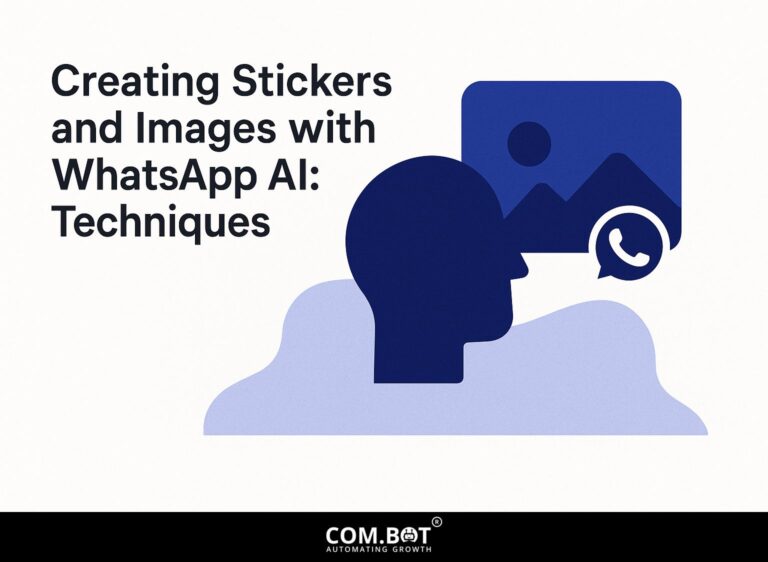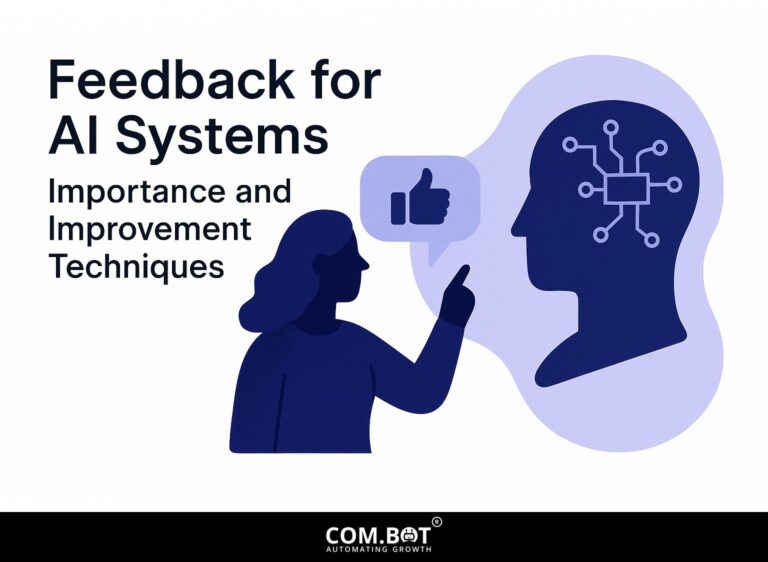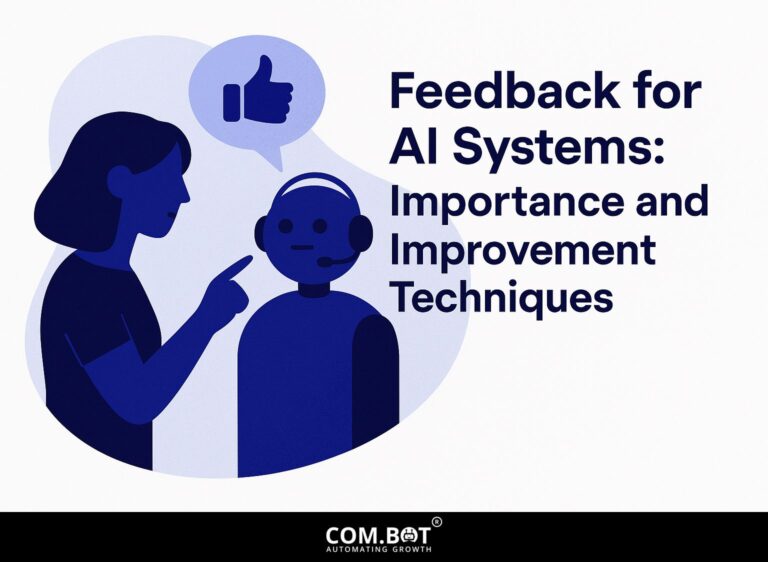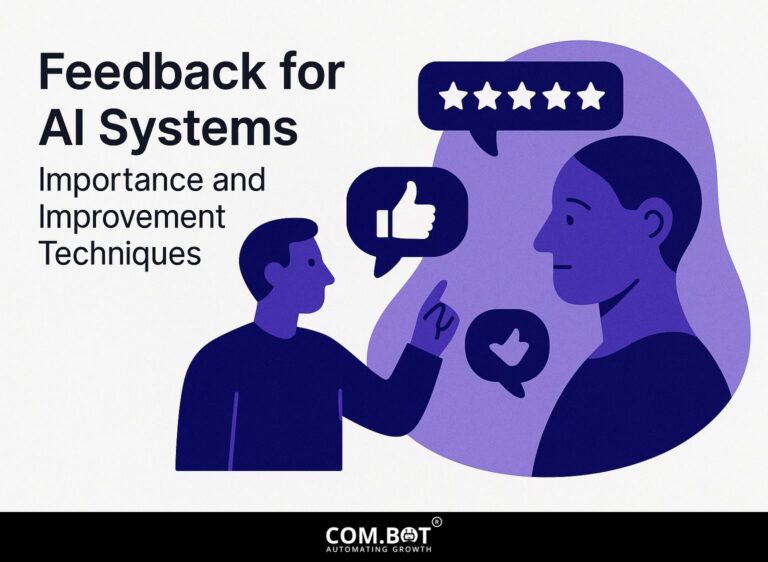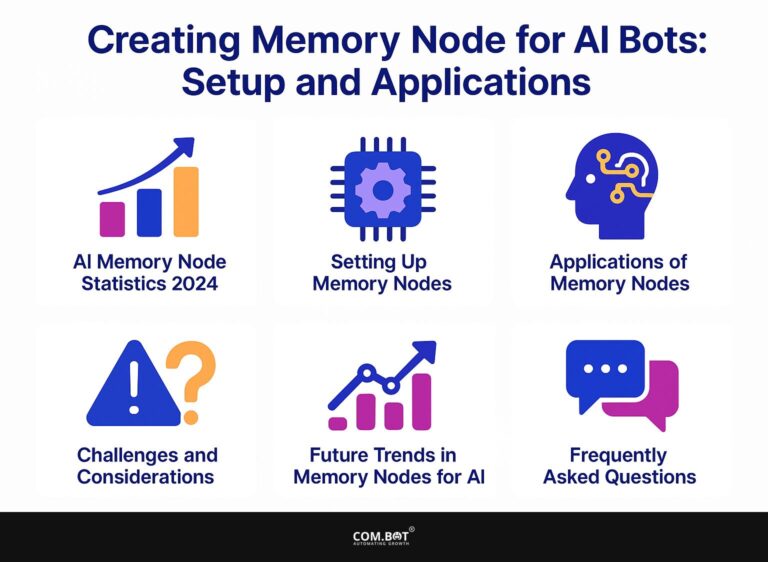Feedback for AI Systems: Importance and Improvement Techniques
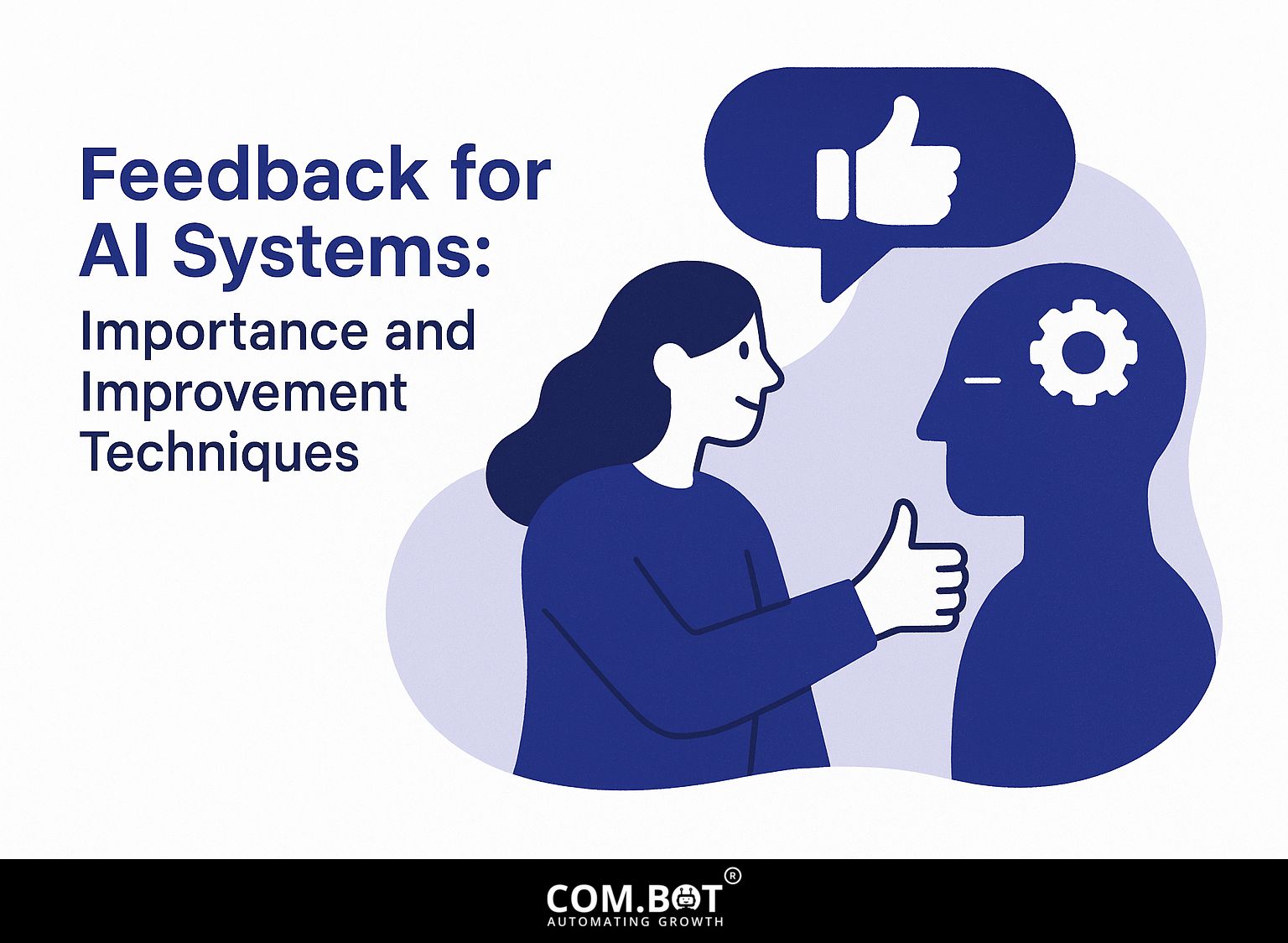
The AI feedback loop is key for improving how well AI performs and making users happier. Knowing why feedback matters helps improve machine learning models and motivates useful human contributions. This article explores methods for making AI systems better by using organized feedback, showing how you can use what you learn to make models more accurate and improve the user experience. See how thoughtful feedback can change the way AI develops.
Key Takeaways:
- 1 Importance of Feedback in AI Systems
- 2 Types of Feedback Mechanisms
- 3 Techniques for Collecting Feedback
- 4 Analyzing Feedback for Improvement
- 5 Challenges in Implementing Feedback
- 6 AI Feedback Statistics 2024
- 7 Frequently Asked Questions
- 7.1 What is the importance of feedback for AI systems?
- 7.2 How does feedback benefit AI systems?
- 7.3 What are some techniques for providing feedback to AI systems?
- 7.4 Why is it important to have diverse and unbiased feedback for AI systems?
- 7.5 What are the challenges of implementing feedback in AI systems?
- 7.6 How can feedback be used to improve human-AI collaboration?
Definition and Scope
AI feedback encompasses a variety of methodologies, including supervised, unsupervised, and reinforcement learning, each contributing uniquely to model training.
Supervised learning requires labeled data, guiding the model with input-output pairs. For instance, using a dataset like the MNIST for digit recognition trains the model to predict numbers based on prior examples.
In contrast, unsupervised learning identifies patterns within unlabelled data, as seen in clustering algorithms like K-means, which can group customer segments without predefined categories.
Reinforcement learning helps improve choices by learning from past actions. AlphaGo developed its strategy by trying different moves and learning from mistakes. Grasping these differences is important for successfully using AI models. If interested, explore more on the importance and techniques for improving AI systems through feedback.
Significance in AI Development
Integrating feedback mechanisms is essential in AI development, as it directly influences performance metrics and data quality, leading to effective algorithm adjustments.
Using structured feedback loops helps improve how well a model adjusts based on user interactions.
For example, using A/B testing can give clear information on what users like, helping teams to improve algorithms with current data.
Tools like UserVoice enable users to submit feedback seamlessly, while platforms such as Google Analytics track user engagement metrics.
By incorporating this data into regular development cycles, AI systems can evolve to meet user needs more effectively, resulting in improved satisfaction and overall performance.
Importance of Feedback in AI Systems
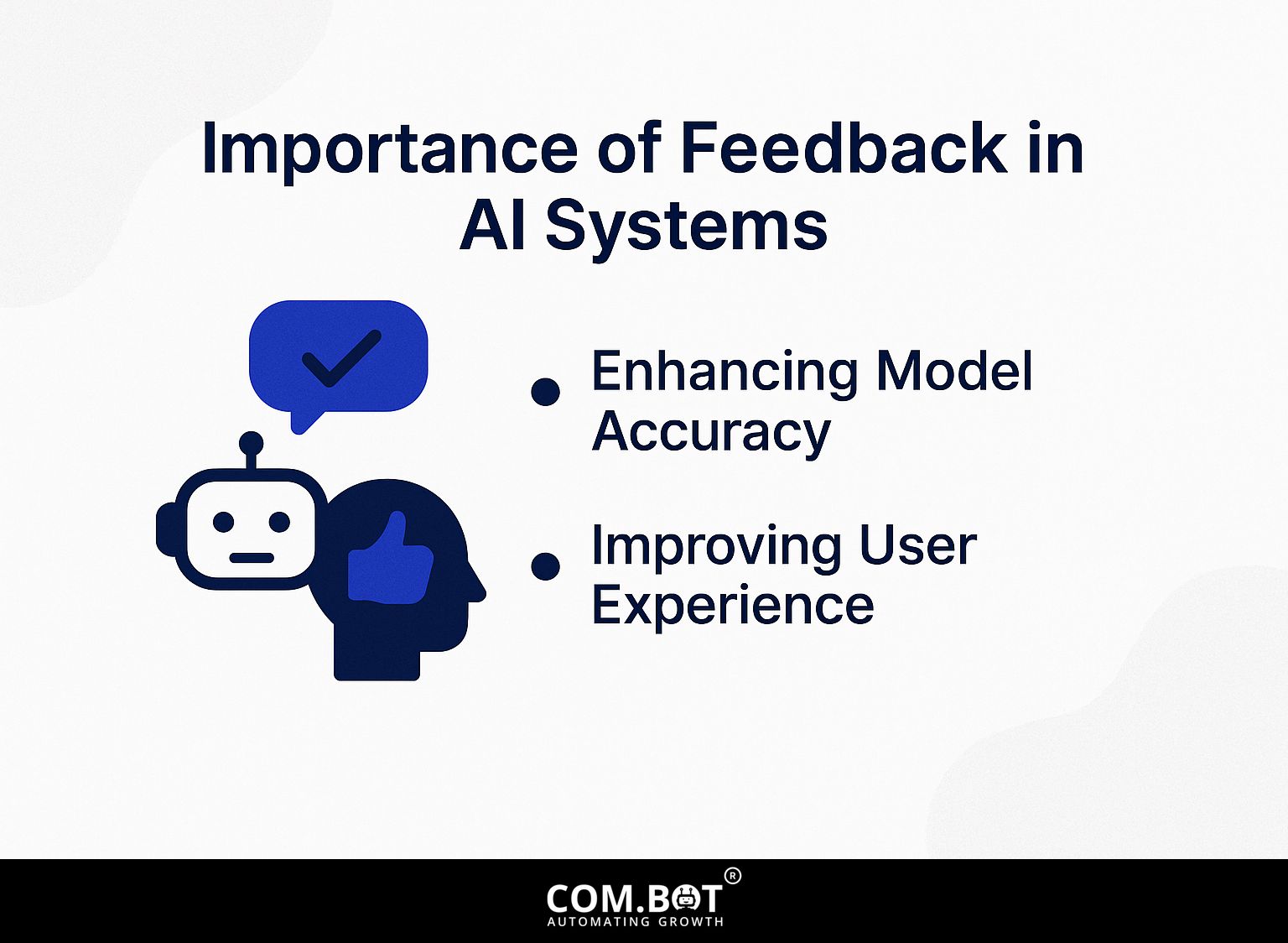
Feedback is important for making AI systems better, increasing model accuracy, and refining user interactions through ongoing review. One of our most insightful case studies demonstrates how effective feedback mechanisms can significantly enhance AI performance.
Enhancing Model Accuracy
Organized feedback methods can improve model accuracy by up to 30%, which significantly enhances predictive monitoring capabilities.
Using methods like reinforcement learning is important. This method uses algorithms that learn from mistakes and continue to change based on input to get better results.
For example, using performance measures like accuracy and recall helps pinpoint areas that need improvement. A practical example is Google’s RankBrain, which improves search results by analyzing how users interact with them.
By checking these measurements after each cycle, developers can keep improving the models, resulting in better outputs and higher accuracy.
Improving User Experience
Adding user feedback directly into AI systems can improve user satisfaction by over 40%, making interactions better fit each person’s needs.
Companies like Amazon show this strategy by using customer reviews and ratings to improve product recommendations. They study what customers think to improve their programs, making shopping more personalized for everyone.
For instance, if a customer frequently buys history books, Amazon’s system will prioritize similar titles based on past purchases and reviews.
Businesses can use tools like Qualtrics to collect immediate feedback, allowing them to quickly change and make their products better based on what users like.
Types of Feedback Mechanisms
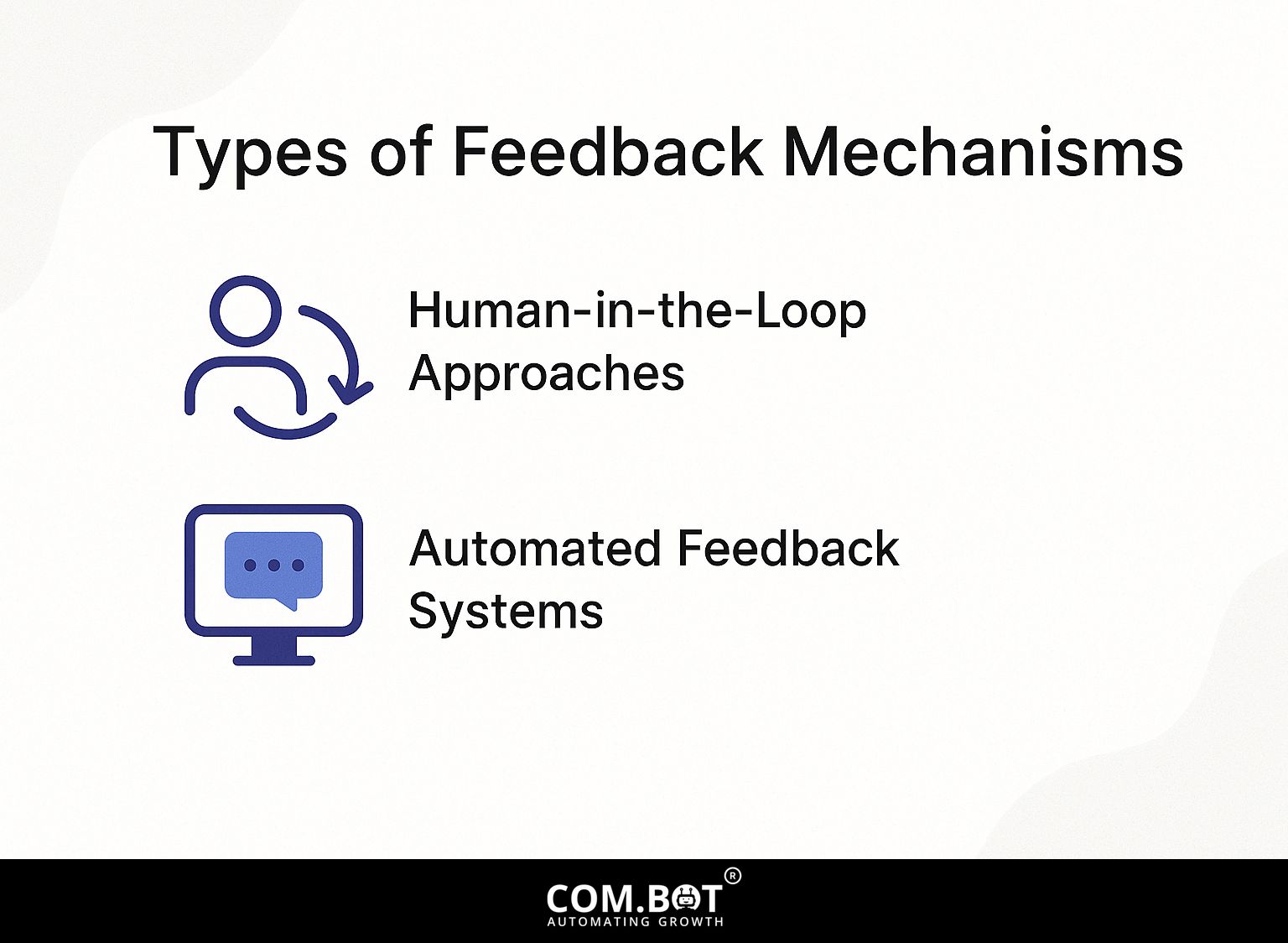
AI systems use various ways to get feedback, mixing human feedback and machine systems to make things work better. For an extensive analysis of this trend, our comprehensive study on feedback improvement techniques for AI systems examines the importance of integrating these methods.
Human-in-the-Loop Approaches
Human-in-the-loop methods involve people giving feedback to AI systems, which greatly improves the models’ accuracy and ability to change by working together.
For example, Google uses human reviewers to check search results produced by machines, helping the AI to improve its algorithms.
Companies like OpenAI use user feedback in applications such as ChatGPT, where responses can be rated for quality.
To use a similar strategy, organizations can use tools like Amazon Mechanical Turk to distribute tasks and collect feedback, so that human input effectively guides model training and changes.
This repeated process helps develop an AI that better matches user needs and practical situations.
Automated Feedback Systems
Automated feedback systems use data to make AI training better, allowing models to update and learn from large amounts of information instantly.
Tools like Label Studio make data labeling easier, which is important for training models well. Users can label images or text to create useful data sets that help AI learn better.
This platform handles various file formats and allows team collaboration, speeding up tasks. Using these tools in your process can cut down on training time and improve accuracy.
In practice, using Label Studio can reduce the time needed to prepare data by up to half, resulting in quicker setup of highly effective AI models.
Techniques for Collecting Feedback
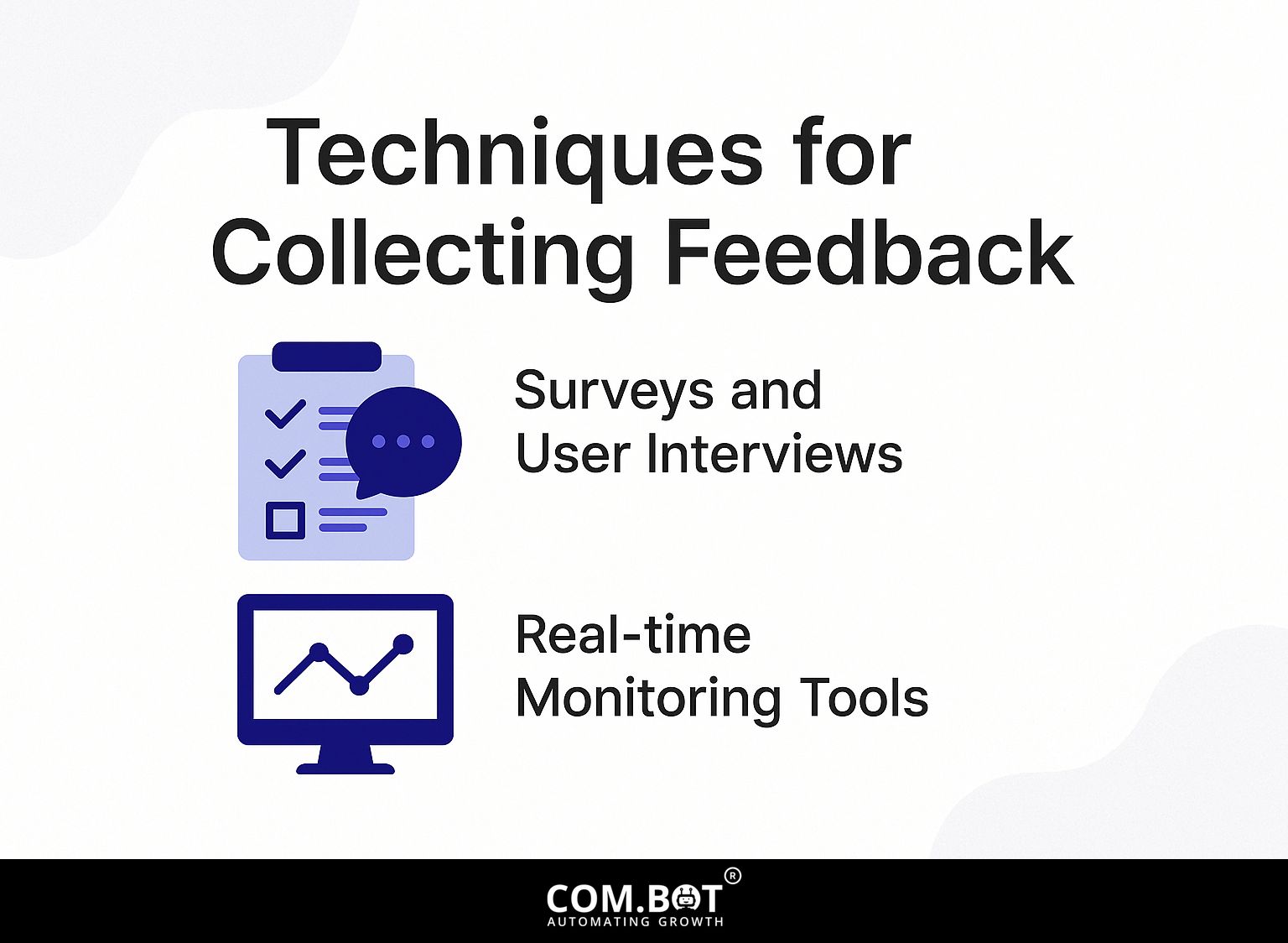
Collecting feedback is essential to make AI better. This can be done through surveys, talking to users, and using real-time monitoring tools. For a deeper understanding of how feedback can drive AI system enhancements, learn more about the importance and improvement techniques for AI systems.
Surveys and User Interviews
Carrying out surveys and speaking with users can give helpful details, directly affecting how AI works and is created.
To carry out user surveys well, begin by setting your goals. Use tools like Google Forms for simple, adjustable surveys or SurveyMonkey for detailed analysis.
Create questions that lead to detailed feedback. Include both multiple-choice and open-ended types.
After collecting responses, review the data with the built-in analytics tools or export it for detailed analysis in Excel. Regularly scheduled interviews can complement surveys by exploring user motivations and pain points in more detail, offering a richer context for AI development decisions.
Real-time Monitoring Tools
Real-time monitoring tools, such as Grafana and Prometheus, provide immediate feedback, essential for maintaining data quality and performance metrics.
To implement these tools effectively, start by integrating them into your existing infrastructure.
For Grafana, configure data sources from Prometheus to visualize metrics effortlessly. Create dashboards that track key performance indicators (KPIs) such as response times and error rates. Set notifications for important changes; for example, if your AI model’s accuracy drops below a set level, send alerts to stakeholders.
This immediate response process improves performance and lets you change model settings quickly, maintaining consistent effectiveness and dependability in AI uses.
Analyzing Feedback for Improvement
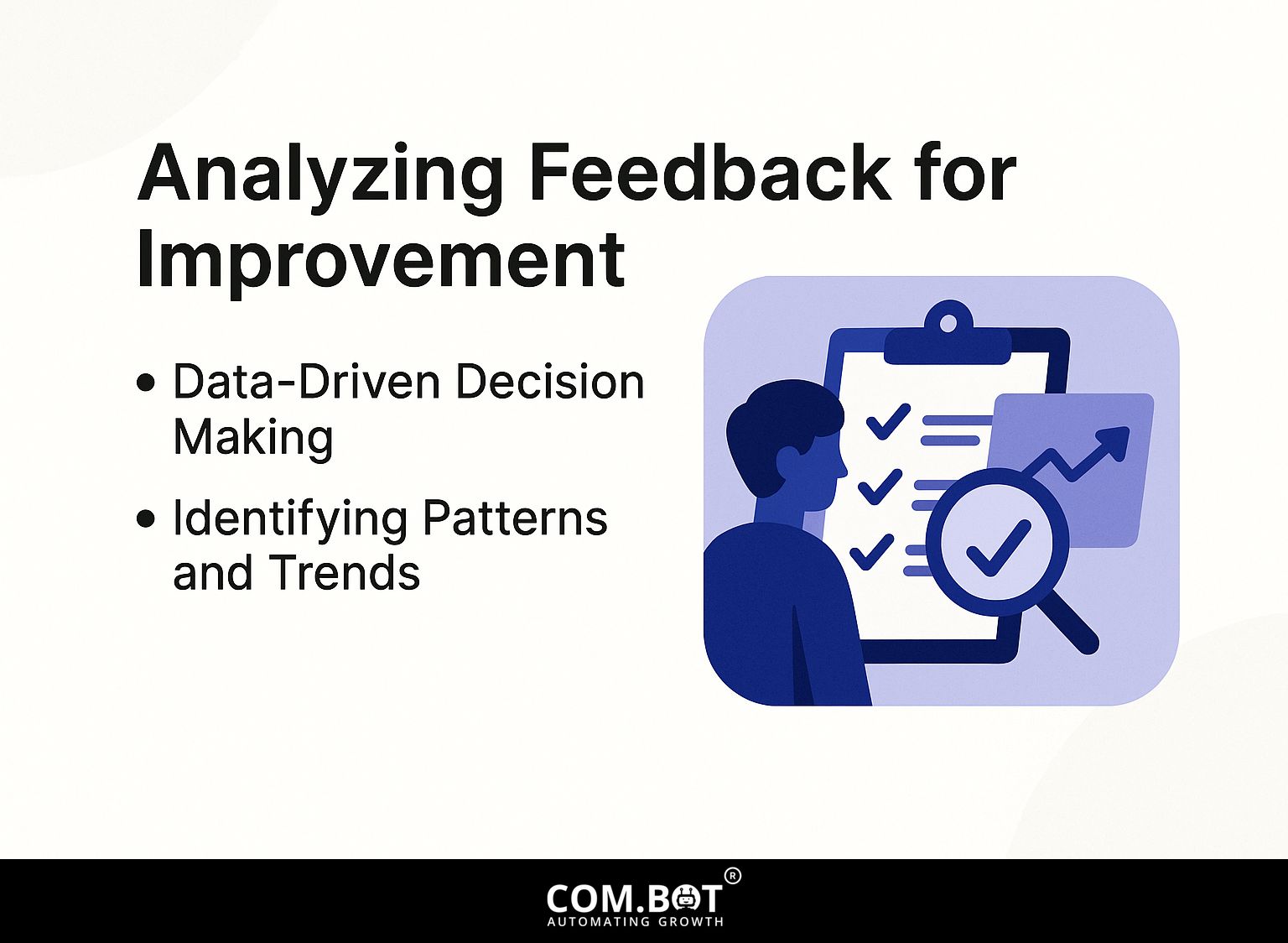
Careful analysis of feedback aids in data-driven decision-making, helping organizations to identify patterns and trends that make AI better.
Data-Driven Decision Making
Using data to make decisions helps businesses work better, with 70% of companies seeing better results by using organized feedback analysis.
Using feedback in planning can be very useful in online shopping. Start by collecting customer feedback through surveys and reviews, using tools like SurveyMonkey or Trustpilot.
Look at the data to find trends and problems, then use this information to create specific marketing plans or make products better.
For instance, if feedback highlights slow delivery times, consider investing in faster shipping options or enhancing your logistics. This approach addresses customer concerns, builds loyalty, and increases sales.
Identifying Patterns and Trends
By using feedback data to find unusual patterns, organizations can spot important trends that help make changes and improvements to AI systems.
To study feedback data well, use tools like Google Analytics for information on web interactions or Qualtrics for thorough user surveys.
For instance, employing predictive analysis within your AI system can help spot user frustration, leading to interface improvements.
Tools like Tableau can visualize trends over time, revealing when users drop off in engagement. Regularly checking this data lets teams make small adjustments that improve user satisfaction and keep users coming back, as shown by companies that have effectively added ongoing feedback processes into their product development cycles.
Challenges in Implementing Feedback
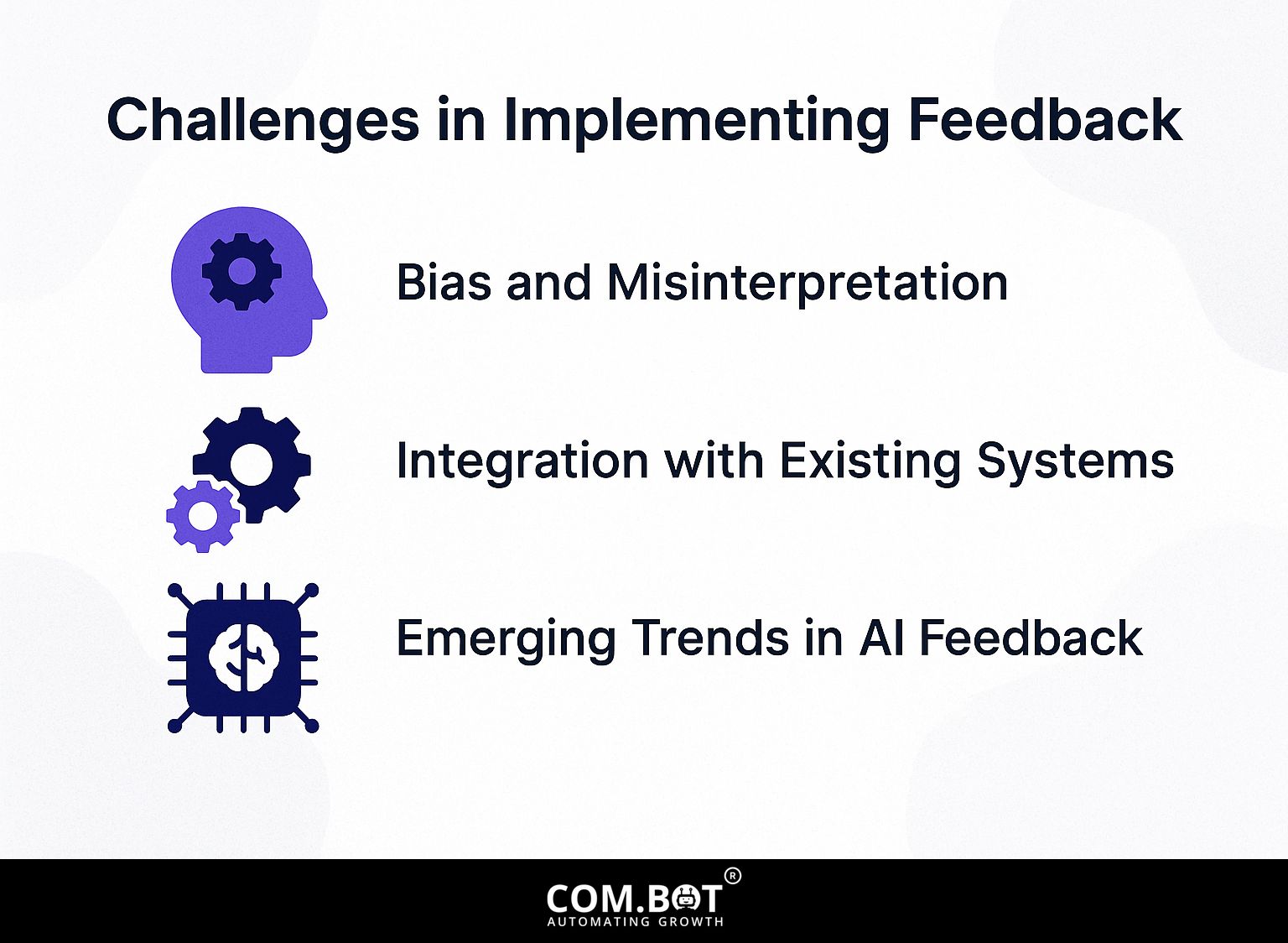
Feedback can be useful, but using it in AI systems is tough because of issues like biases and misinterpreting data. These challenges are particularly evident in multilingual AI chatbots, as discussed in our article on AI Chatbots: Multilingual Support, Benefits, and Implementation.
Bias and Misinterpretation
Bias and confusion can significantly impact AI outcomes, so it’s important to create solid strategies to minimize bias and encourage ethical AI development.
To tackle these challenges, concentrate on varying the training data by including different age groups, viewpoints, and situations. This allows the model to gain knowledge from various inputs instead of a single point of view.
Use ethical guidelines like the FAIR principles, which emphasize inclusivity, responsibility, honesty, and respect. Regular checks of AI systems are important to find and fix biases.
Tools like IBM’s Watson OpenScale can watch models as they run, showing how bias might occur and letting you make changes quickly.
Integration with Existing Systems
Adding ways to get feedback to current AI systems can be difficult. It often needs cooperation between different technical teams to improve how the system works.
For instance, a healthcare organization successfully integrated patient feedback into its AI diagnostics system. By employing tools like SurveyMonkey for data collection and Tableau for analysis, they improved diagnostic accuracy by 25% in just six months.
Another case is a retail company that implemented real-time customer feedback loops using Zendesk, leading to a 30% drop in service response time.
These examples show how bringing in effective feedback can greatly improve how well operations run in different areas.
Emerging Trends in AI Feedback
New AI feedback trends show a shift towards self-learning systems and better data sources, allowing organizations to improve their performance.
These improvements enable systems to change and improve their methods using ongoing data.
For example, companies such as Google use reinforcement learning in their algorithms, allowing them to make search results better instantly. Netflix studies viewer data to change recommendations based on watching habits.
Tools like TensorFlow and PyTorch are essential for organizations aiming to set up self-learning AI, providing systems that make building models easier.
By using these tools, companies can make users happier and encourage more interaction, which leads to better performance numbers.
AI Feedback Statistics 2024
AI Feedback Statistics 2024
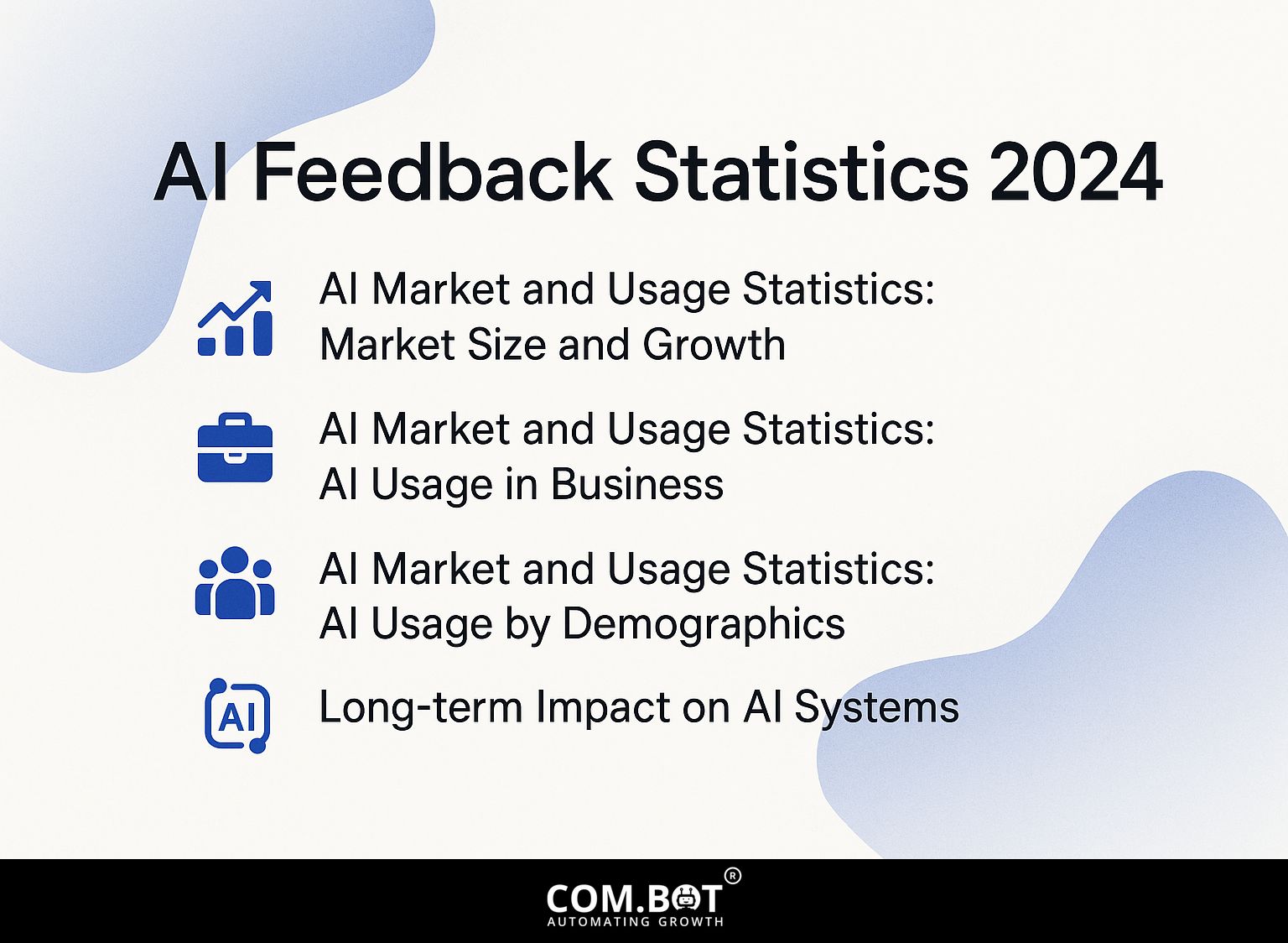
AI Market and Usage Statistics: Market Size and Growth
AI Market and Usage Statistics: AI Usage in Business
AI Market and Usage Statistics: AI Usage by Demographics
The AI Feedback Statistics 2024 provides thorough details about current and upcoming trends in the AI industry, its application by companies, and how various individuals are using it. This data shows how AI is increasingly affecting different areas and becoming part of everyday activities.
AI Market and Usage Statistics reveal that the global AI market size in 2023 was valued at $454.12 billion, with North America holding a significant 36.84% market share. This regional dominance highlights the advanced technological infrastructure and investment focus in North America. An impressive 19% annual growth rate projects the global market to reach $2.5 trillion by 2032, indicating vast opportunities for innovation and expansion across industries.
The data on AI Usage in Business highlights its application in customer service, where 56% of businesses leverage AI for improved efficiency and customer satisfaction. Moreover, 55% of Americans interact with AI, showcasing its integration into daily life and consumer interactions. Notably, 65% of CEOs using ChatGPT shows how AI is important for making decisions and communicating in leadership.
Exploring AI Usage by Demographics An unexpected discovery is the comparable weekly use of virtual assistants among individuals aged 18-25 (29.9%) and those over 61 (30.8%). This suggests broadening accessibility and acceptance across age groups. Additionally, the 29.7% daily usage of email spam filters by males Highlights AI’s part in improving online safety and how people interact with technology.
Overall, the AI Feedback Statistics 2024 highlights the significant and growing impact of AI across global markets, business operations, and individual use. As AI technology improves, its use in different areas of life and work will likely grow, bringing major advantages and needing flexible approaches for effective application.
Long-term Impact on AI Systems
Incorporating feedback over time will influence AI systems by guiding ethical choices and bettering how decisions are made.
To improve how feedback is used, organizations should set up organized systems for collecting feedback using tools like SurveyMonkey for surveys or UserTesting for direct customer feedback.
Using platforms like Slack can help continue conversations about performance and ethics. It’s important to review feedback often to make sure AI systems change and grow responsibly.
Establishing an ethics committee can provide oversight, balancing innovation with societal values. By prioritizing ethical guidelines, the potential for better system interactions and user trust significantly increases in the long run.
Frequently Asked Questions
What is the importance of feedback for AI systems?
Giving feedback to AI systems is important to make them work better and more accurately. It helps the system to learn from its mistakes and make necessary adjustments to its algorithms.
How does feedback benefit AI systems?
Feedback helps AI systems to keep getting better and change over time, making them work smarter and solve problems more accurately. It also helps them adjust to changing conditions and information.
What are some techniques for providing feedback to AI systems?
Some techniques for providing feedback to AI systems include explicit labeling, reinforcement learning, and natural language feedback. These techniques allow for direct input and guidance to the system.
Why is it important to have diverse and unbiased feedback for AI systems?
Receiving different and impartial views is important to prevent favoritism and make fair choices in AI systems. It helps to identify and correct any biases that may exist in the system’s algorithms.
What are the challenges of implementing feedback in AI systems?
One of the main challenges of implementing feedback in AI systems is the need for large amounts of data and resources. Finding a way to include feedback without affecting the system’s performance can be challenging.
How can feedback be used to improve human-AI collaboration?
Feedback can help connect human and AI decision making by explaining how the system functions and how it can be made better. It allows for mutual learning and helps build trust in the AI’s capabilities.
